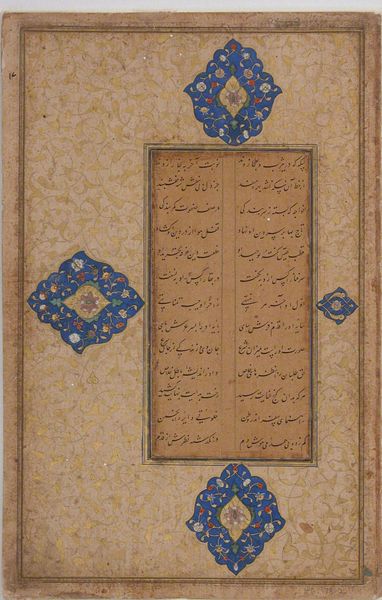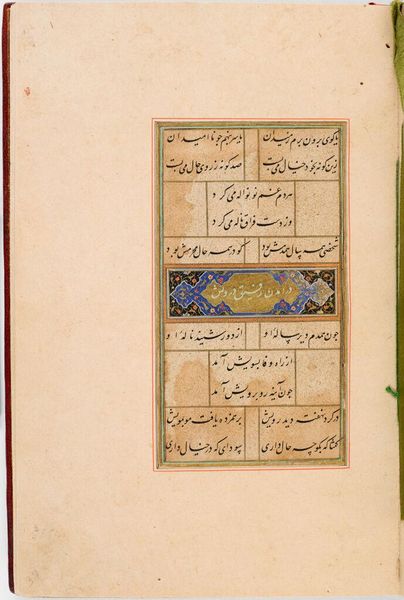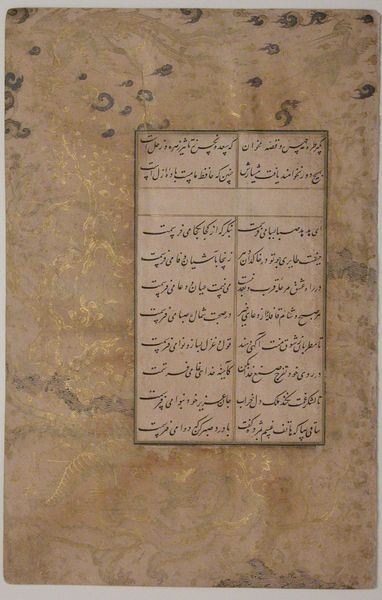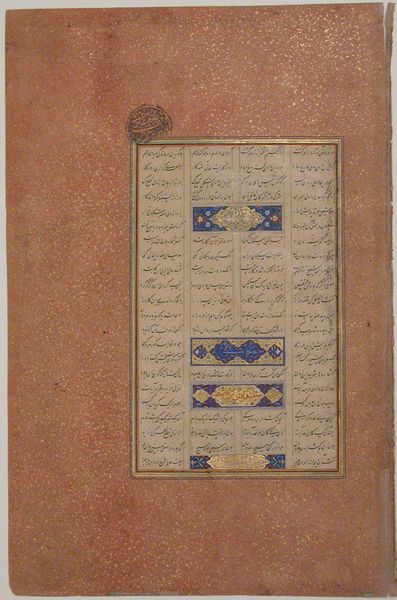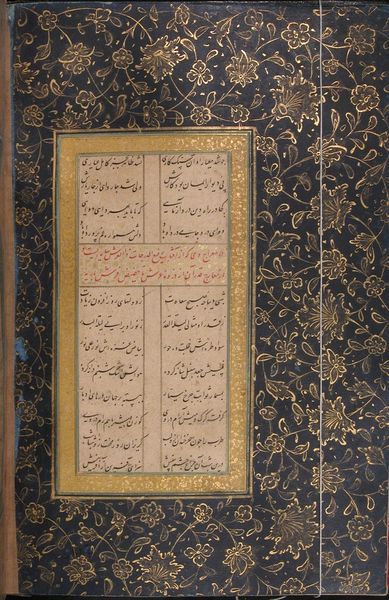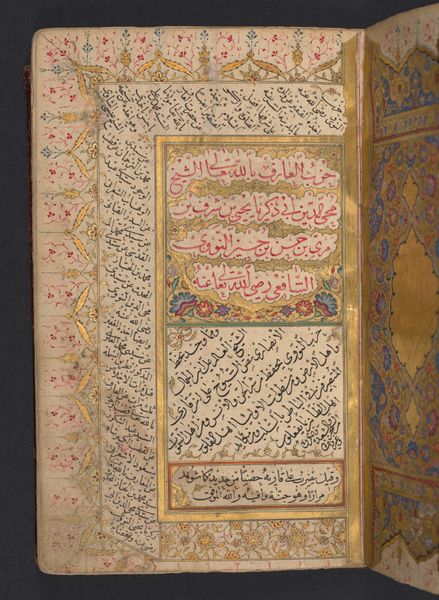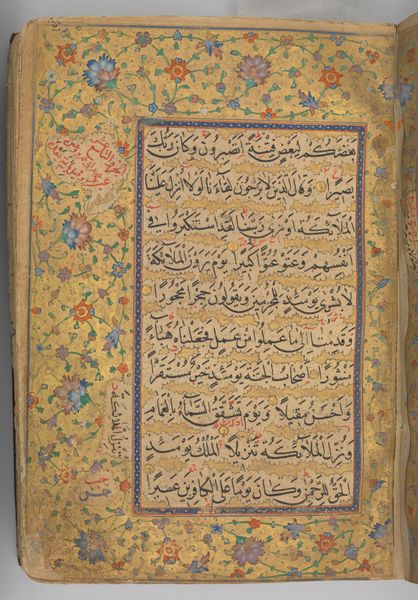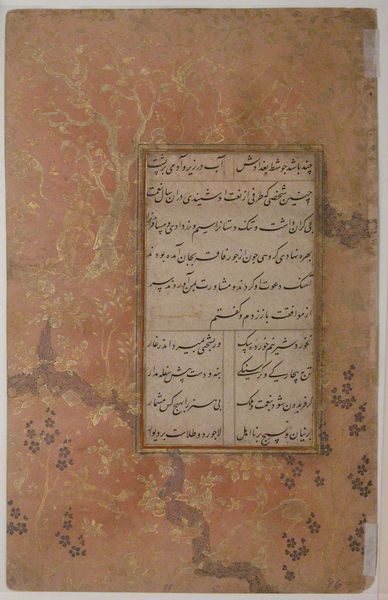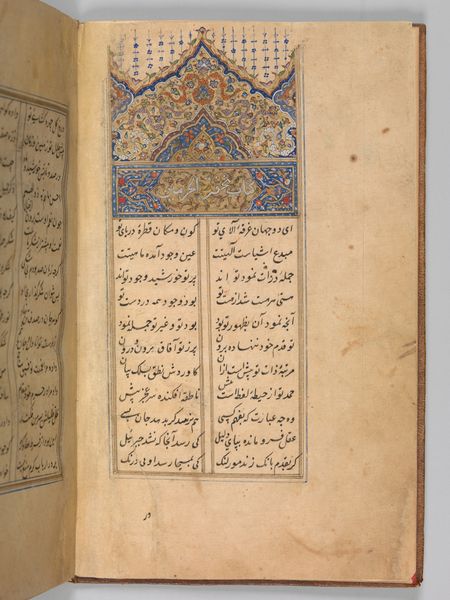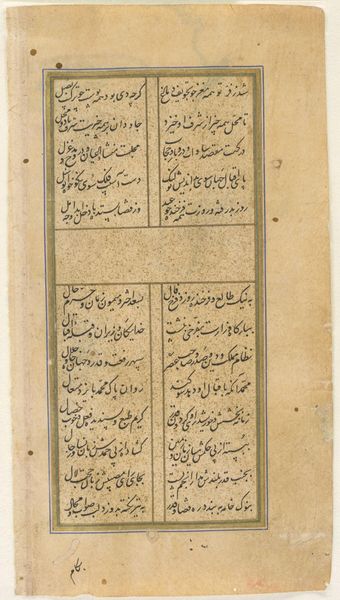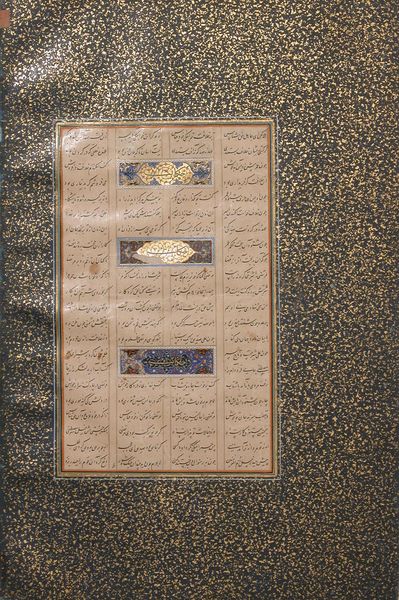
painting, paper, ink
#
painting
#
paper
#
ink
#
islamic-art
#
miniature
#
calligraphy
Dimensions: H. 9 3/4 in. (24.8 cm) W. 6 1/2 in. (16.5 cm)
Copyright: Public Domain
Curator: The crisp lines of the calligraphy create an interesting contrast with the fluid, organic patterns in the gold leaf bordering. This manuscript page, *Bustan (Orchard) of Sa'di*, dates back to the 17th century. Editor: It is so delicate! The entire composition, executed in ink, paint and gold on paper, gives a sense of both balance and movement to me. The text is neatly arranged in a box, and the entire format gives the piece an almost ethereal, elevated quality. How would you interpret this work? Curator: It is important to first appreciate the function of calligraphy in Islamic art. Observe the spatial relationship between the text and the decorative motifs, especially how the gold leaf frames and enhances the text, inviting the viewer to first appreciate it visually, then to meditate on it intellectually. Editor: You're suggesting the visual is an entry point? Curator: Indeed. Consider the semiotics of each motif. How does the repetition of these floral patterns around the borders change the overall mood? Or the central framing, containing and directing focus on the calligraphy itself? What philosophies of design might it represent? Editor: I hadn’t thought about the individual motifs as having semantic content! Focusing on the form itself provides a vocabulary for interpretation that goes beyond simply appreciating the script or cultural context. Curator: Precisely. Approaching this miniature through visual syntax gives insight into not only the intended function but also its deeper aesthetics. The combination of those elements gives the manuscript an interesting aesthetic and cultural depth.
Comments
No comments
Be the first to comment and join the conversation on the ultimate creative platform.
